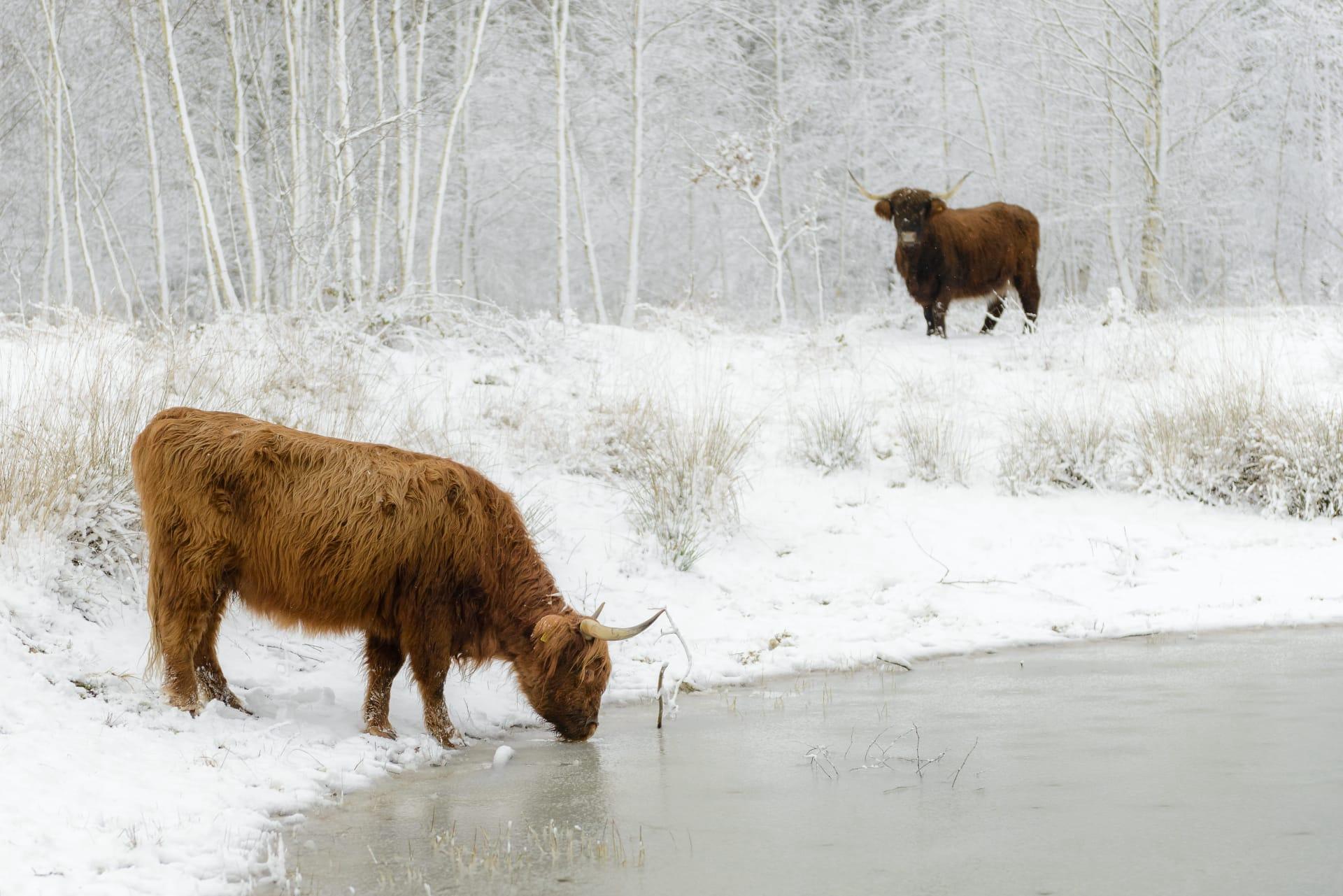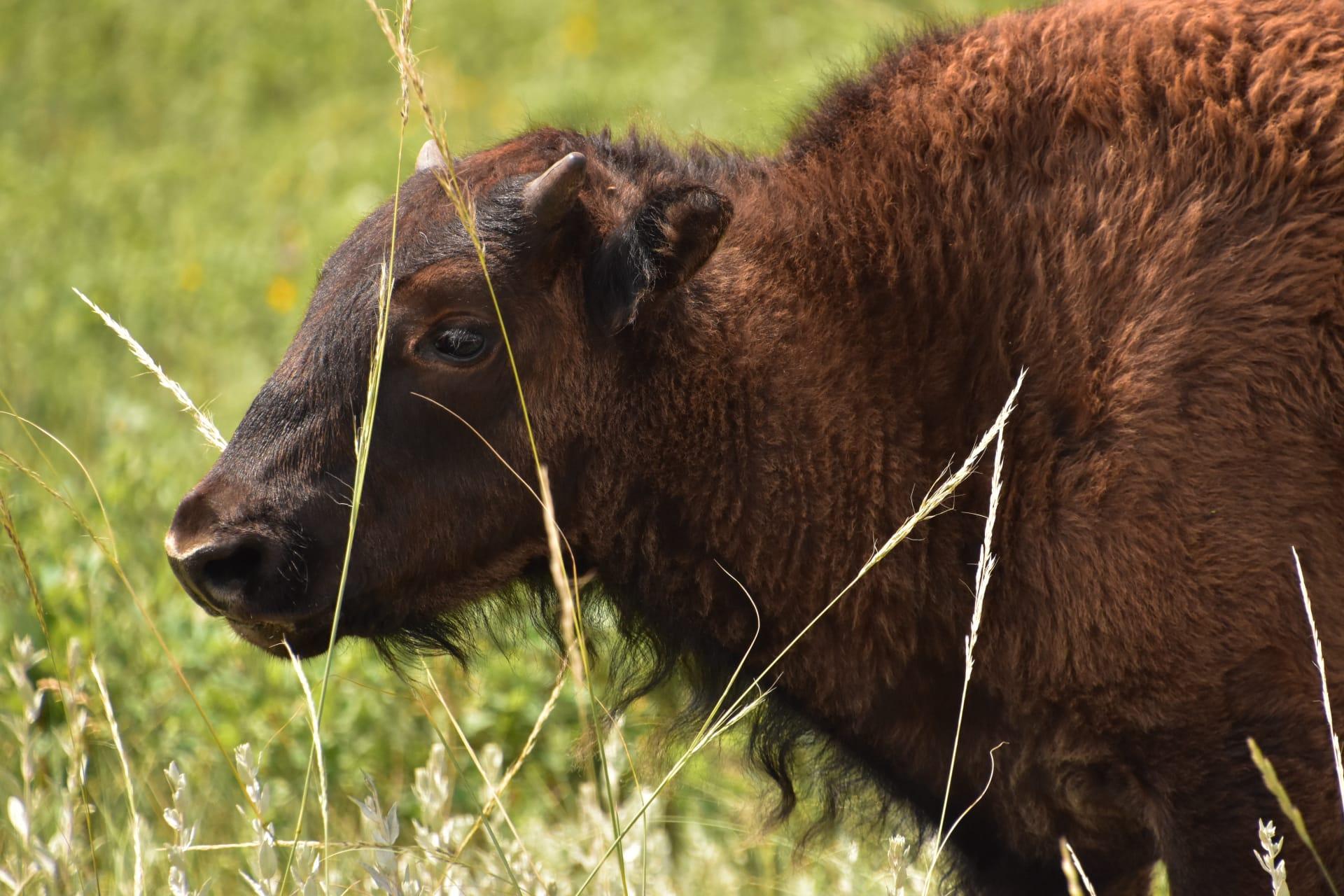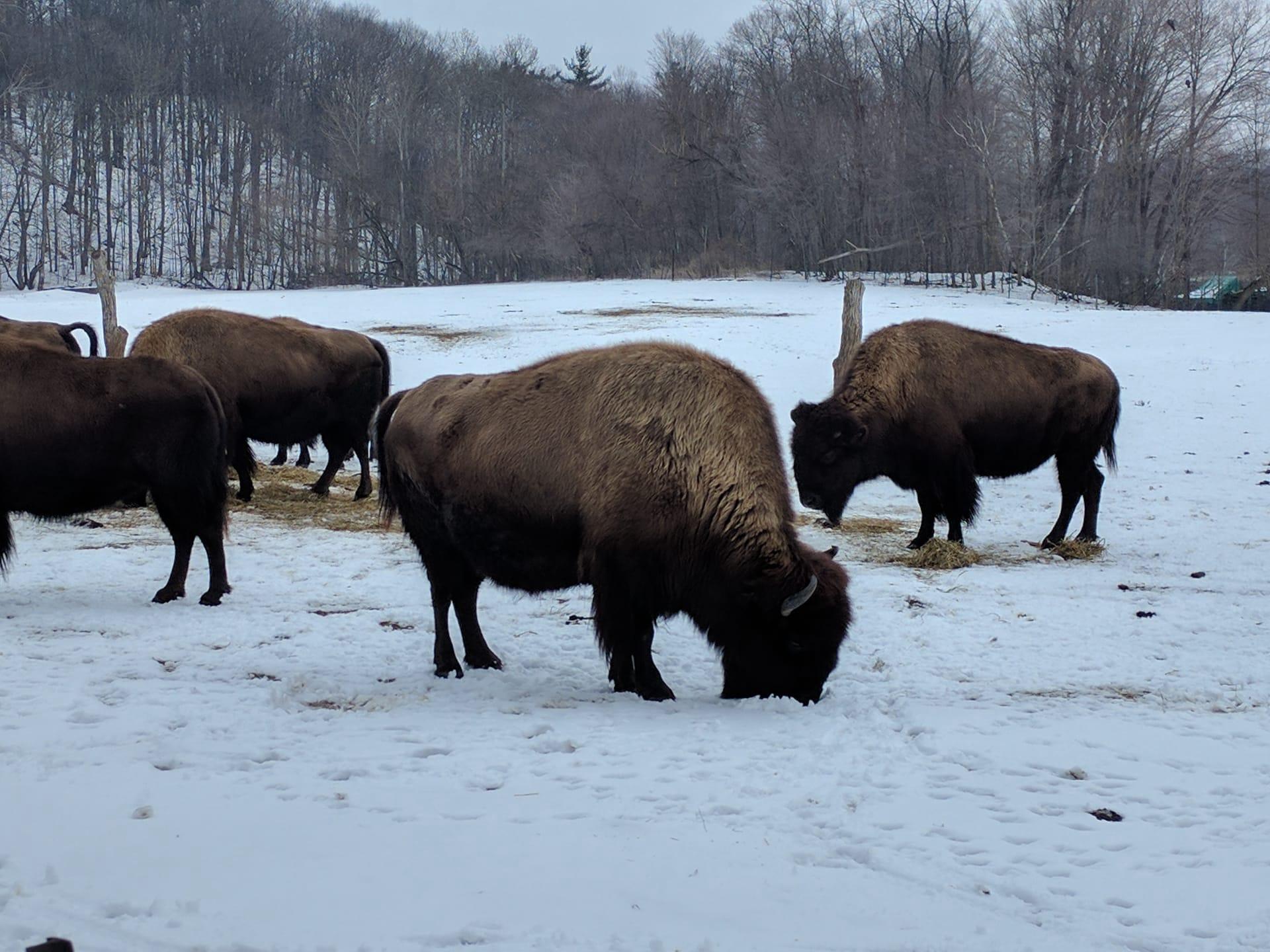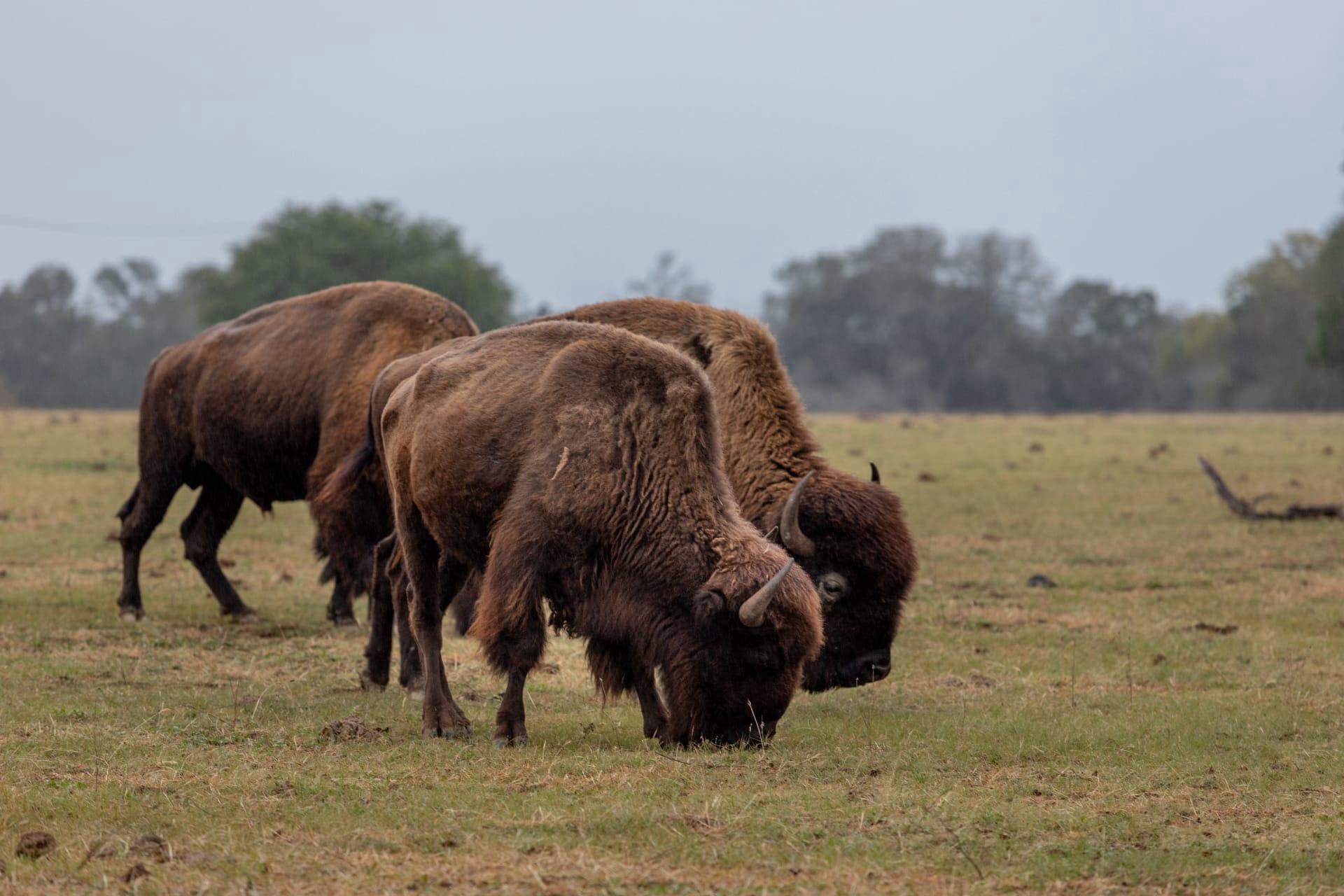American Bison Characteristics
- Home /
- Mini Encyclopedia /
- Animal /
- American Bison Characteristics
1
The American Bison, a majestic symbol of the North American plains, is an animal of impressive physical characteristics. Adult males, known as bulls, can weigh between 1,000 to 2,200 pounds (450 to 1,000 kilograms) and stand up to 6 feet (about 1.8 meters) tall at the shoulder. Females, or cows, are slightly smaller, weighing 800 to 1,200 pounds (360 to 540 kilograms). Bison have a lifespan of approximately 15 to 20 years in the wild, though some can live up to 25 years. Their large, muscular hump, which supports their massive head and shoulders, is particularly distinctive. This hump is not just for show; it's a powerhouse of muscles that helps them plow through snow in search of food.
One of the most remarkable organs of the American Bison is its stomach. This impressive digestive system allows the bison to efficiently process tough prairie grasses. Unlike humans who have one stomach, bison have a four-chambered stomach, much like cows. This adaptation enables them to ferment plant material in the first chamber, called the rumen, before regurgitating it as “cud” to chew it again. This process extracts maximum nutrients from their plant-based diet, vital for surviving in environments where food quality varies with seasons.

2
Question: Why do American Bison have such thick fur?
Answer: The thick fur of the American Bison is a crucial adaptation for survival. Their dense, shaggy coat provides excellent insulation against the harsh winter climates of the Great Plains. In the winter, their fur is so effective at insulation that snow can settle on their backs without melting, indicating how well it conserves body heat. Additionally, the bison's coat is uniquely structured with a dense layer of underfur covered by longer, coarser guard hairs. This dual-layer system not only keeps them warm but also helps shed water and snow, ensuring they remain dry and warm even in wet conditions.

3
When it comes to movement, the American Bison is surprisingly agile for its size. Despite their bulky appearance, bison can run at speeds up to 35 miles per hour (56 kilometers per hour) and are capable of turning quickly to evade predators. Their agility is especially evident during mating season when bulls engage in fast-paced chases to court females. This speed and maneuverability are critical survival traits in the open plains, where predators like wolves and bears may threaten.
In terms of feeding habits, the American Bison is predominantly a grazer. Its diet mainly consists of grasses and sedges found in prairie ecosystems. Bison have a unique grazing pattern: they prefer to eat younger, more tender shoots and can move considerable distances to find these preferred foods. Their grazing habits play a significant role in shaping the ecology of the grasslands, promoting biodiversity by preventing any single plant species from dominating the landscape.

4
The American Bison once roamed across a vast range of North America, from northern Mexico to Canada. Today, they primarily inhabit grasslands, prairies, and open woodlands. These environments provide the essential grasses that make up their diet. National parks and reserves, such as Yellowstone National Park, are modern strongholds for bison, offering them a protected habitat where they can roam relatively freely.
Reproduction is a key aspect of bison life. The mating season, or rut, occurs from July to August. During this time, bulls compete for access to females through displays of strength and endurance. Females usually give birth to a single calf after a gestation period of about 9 months. Calves are born in the spring, ensuring that there is plenty of fresh grass for the lactating mothers. The young bison are quick to stand and can walk within hours of birth, an important adaptation for these herd animals that need to be mobile to avoid predators.

5
Book: "American Bison: A Natural History" by Dale F. Lott, published in 2003, explores the intricate life of bison in North America. Lott, a renowned wildlife biologist, provides a comprehensive view of bison behavior, ecology, and their relationship with the American landscape. The book delves into the history of bison, their near extinction, and subsequent recovery efforts, offering a thorough understanding of these iconic creatures.
Book: "Last Stand: George Bird Grinnell, the Battle to Save the Buffalo, and the Birth of the New West" by Michael Punke, published in 2007, narrates the critical efforts to save the American Bison from extinction in the late 19th century. Focusing on the role of conservationist George Bird Grinnell, the book provides a historical context to the conservation movement in the United States and the pivotal role bison played in shaping the American West.